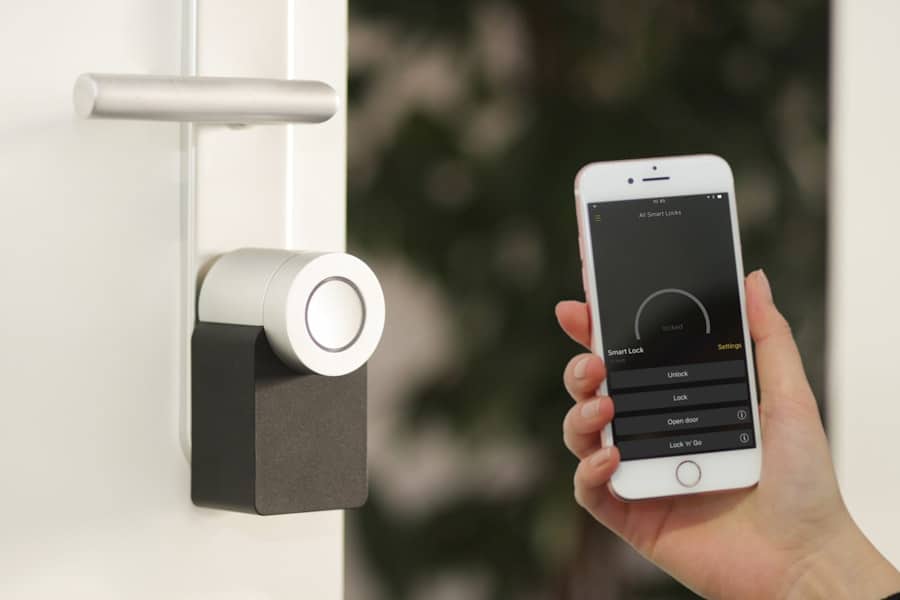The advent of smart home technology has revolutionized the way we interact with our living spaces, offering unprecedented control and convenience. As climate change continues to pose significant challenges globally, the integration of smart home systems presents a unique opportunity to mitigate its effects. Smart homes utilize interconnected devices and systems that can be monitored and controlled remotely, allowing homeowners to optimize energy consumption, enhance comfort, and reduce their carbon footprint.
This technological evolution is not merely a trend; it represents a critical shift towards sustainable living in an era where environmental concerns are paramount. The relationship between smart homes and climate change is multifaceted. On one hand, smart technologies can significantly reduce energy usage and greenhouse gas emissions, contributing to a more sustainable future.
As urbanization accelerates and populations grow, the need for efficient resource management becomes increasingly urgent. Smart homes stand at the forefront of this movement, offering innovative solutions that align with the goals of climate action and sustainability.
Key Takeaways
- Smart homes play a crucial role in addressing climate change by promoting energy efficiency and sustainability.
- Smart home technology enables homeowners to reduce their energy consumption and carbon footprint through automation and climate control.
- Smart home sensors are essential in adapting to climate change by providing real-time data on environmental conditions and energy usage.
- Integrating renewable energy sources into smart homes further contributes to reducing greenhouse gas emissions and reliance on fossil fuels.
- Smart home water management and air quality monitoring also play a significant role in conserving resources and improving environmental health.
Smart Home Technology and Energy Efficiency
Energy efficiency is one of the most compelling advantages of smart home technology. By employing devices such as smart thermostats, energy-efficient lighting, and intelligent appliances, homeowners can drastically reduce their energy consumption. For instance, smart thermostats like the Nest Learning Thermostat learn the habits of residents over time, adjusting heating and cooling schedules to optimize energy use without sacrificing comfort.
This not only leads to lower utility bills but also minimizes the demand on power plants, which often rely on fossil fuels. Moreover, smart lighting systems equipped with motion sensors can automatically turn off lights in unoccupied rooms, further enhancing energy savings. These systems can be programmed to adjust brightness based on natural light levels, ensuring that energy is used only when necessary.
The cumulative effect of these technologies can lead to significant reductions in household energy consumption. According to the U.S. Department of Energy, homes equipped with smart technologies can save up to 30% on energy costs annually, translating into substantial financial savings and a reduced carbon footprint.
Smart Home Automation and Climate Control

Smart home automation extends beyond mere energy efficiency; it encompasses comprehensive climate control solutions that enhance indoor comfort while promoting sustainability. Automated systems can manage heating, ventilation, and air conditioning (HVAC) units with remarkable precision. For example, smart HVAC systems can analyze real-time data from various sensors throughout the home to adjust temperatures based on occupancy patterns and external weather conditions.
This level of control ensures that energy is not wasted on heating or cooling empty spaces. Additionally, smart home automation allows for the integration of various climate control devices into a cohesive system. Homeowners can set schedules for their HVAC systems to operate during off-peak hours when electricity rates are lower, further optimizing energy use.
Furthermore, these systems can be controlled remotely via smartphones or tablets, enabling users to make adjustments even when they are away from home. This flexibility not only enhances comfort but also empowers homeowners to respond dynamically to changing weather conditions, thereby reducing reliance on energy-intensive heating and cooling methods.
The Role of Smart Home Sensors in Climate Change Adaptation
Smart home sensors play a pivotal role in climate change adaptation by providing real-time data that informs decision-making regarding resource use. These sensors can monitor various environmental factors such as temperature, humidity, air quality, and even water usage. For instance, smart humidity sensors can detect excess moisture levels in a home, alerting residents to potential mold growth or water leaks before they become significant issues.
By addressing these problems early on, homeowners can prevent costly repairs and reduce the environmental impact associated with water damage. Moreover, air quality sensors are becoming increasingly important as urban areas grapple with pollution and its health implications. These devices can measure levels of particulate matter, volatile organic compounds (VOCs), and other pollutants within the home environment.
When air quality deteriorates, smart systems can automatically activate air purifiers or adjust ventilation settings to improve indoor air quality. This proactive approach not only enhances the health and well-being of residents but also contributes to broader efforts aimed at reducing air pollution and its associated health risks.
Smart Home Integration with Renewable Energy Sources
The integration of smart home technology with renewable energy sources represents a significant advancement in sustainable living practices. Homeowners can harness solar panels or wind turbines to generate their own electricity, reducing dependence on fossil fuels and lowering greenhouse gas emissions. Smart home systems can optimize the use of this renewable energy by managing when appliances operate based on energy availability.
For example, a smart dishwasher can be programmed to run during peak solar production hours when electricity is abundant and inexpensive. Additionally, smart batteries can store excess energy generated from renewable sources for later use. This capability is particularly beneficial during periods of high demand or when renewable generation is low.
By intelligently managing energy storage and consumption, smart homes can achieve greater energy independence while contributing to grid stability. The ability to monitor energy production and consumption in real-time empowers homeowners to make informed decisions about their energy use, further enhancing the sustainability of their living environments.
Smart Home Water Management and Conservation

Smart Irrigation Systems for Optimal Watering
Smart home technology offers innovative solutions for monitoring and conserving water usage within households. Smart irrigation systems equipped with soil moisture sensors can determine when plants need watering based on real-time data rather than relying on fixed schedules. This not only conserves water but also promotes healthier plant growth by ensuring optimal moisture levels.
Early Detection of Water Leaks
In addition to irrigation management, smart water leak detectors can identify leaks in plumbing systems before they escalate into major issues. These devices alert homeowners to unusual water flow patterns or sudden increases in water usage, allowing for prompt repairs that prevent waste and potential damage.
Real-Time Water Consumption Tracking
Furthermore, smart showerheads and faucets equipped with flow rate sensors can help users track their water consumption in real-time, encouraging more mindful usage habits. By integrating these technologies into daily routines, households can significantly reduce their water footprint while contributing to broader conservation efforts.
Smart Home Air Quality Monitoring and Improvement
As awareness of indoor air quality grows, smart home technology has emerged as a vital tool for monitoring and improving the air we breathe within our homes. Poor indoor air quality has been linked to various health issues, including respiratory problems and allergies. Smart air quality monitors can detect pollutants such as carbon dioxide (CO2), particulate matter (PM), and VOCs, providing homeowners with valuable insights into their indoor environment.
When air quality levels drop below acceptable thresholds, smart systems can automatically activate air purifiers or adjust ventilation settings to improve conditions. Some advanced systems even offer recommendations for improving air quality based on real-time data analysis. For instance, if high levels of CO2 are detected due to inadequate ventilation during cooking or other activities, the system may suggest opening windows or increasing airflow from HVAC units.
By actively managing indoor air quality, smart homes not only enhance occupant health but also contribute to broader public health initiatives aimed at reducing pollution exposure.
The Potential of Smart Homes in Addressing Climate Change
The potential of smart homes in addressing climate change is vast and multifaceted. By leveraging advanced technologies for energy efficiency, climate control, water management, and air quality monitoring, homeowners can significantly reduce their environmental impact while enhancing their quality of life. As we face the challenges posed by climate change—rising temperatures, extreme weather events, and resource scarcity—smart homes offer practical solutions that empower individuals to take action.
The integration of renewable energy sources further amplifies this potential by enabling households to generate their own clean energy while minimizing reliance on fossil fuels. As more people adopt smart home technologies, the cumulative effect could lead to substantial reductions in greenhouse gas emissions at a community level.
In a related article discussing the future of smart homes adapting to climate change challenges, Enicomp explores the importance of utilizing advanced technology to create sustainable living environments. By incorporating smart home features that can help reduce energy consumption and carbon footprint, homeowners can play a crucial role in combating climate change. This article delves into the benefits of integrating order flow trading software to optimize energy usage and promote eco-friendly practices within smart homes.
FAQs
What are smart homes?
Smart homes are residences that use internet-connected devices to enable the remote monitoring and management of appliances and systems, such as lighting and heating.
How do smart homes adapt to climate change challenges?
Smart homes can adapt to climate change challenges by using sensors and automation to optimize energy usage, reduce water consumption, and improve indoor air quality. They can also integrate with weather forecasting to adjust settings based on upcoming weather conditions.
What are the benefits of smart homes in addressing climate change?
Smart homes can help reduce energy consumption, lower utility bills, and minimize environmental impact by efficiently managing resources. They can also provide real-time data on energy usage and environmental conditions, enabling homeowners to make informed decisions about their consumption.
What technologies are commonly used in smart homes to address climate change challenges?
Technologies commonly used in smart homes to address climate change challenges include smart thermostats, energy-efficient appliances, automated lighting and shading systems, water-saving fixtures, and air quality monitors. These technologies can be controlled and optimized through a central smart home hub or mobile app.
How can smart homes contribute to overall climate change mitigation efforts?
Smart homes can contribute to overall climate change mitigation efforts by reducing greenhouse gas emissions through energy efficiency and conservation. By optimizing resource usage and promoting sustainable practices, smart homes can play a role in reducing the environmental impact of residential living.

